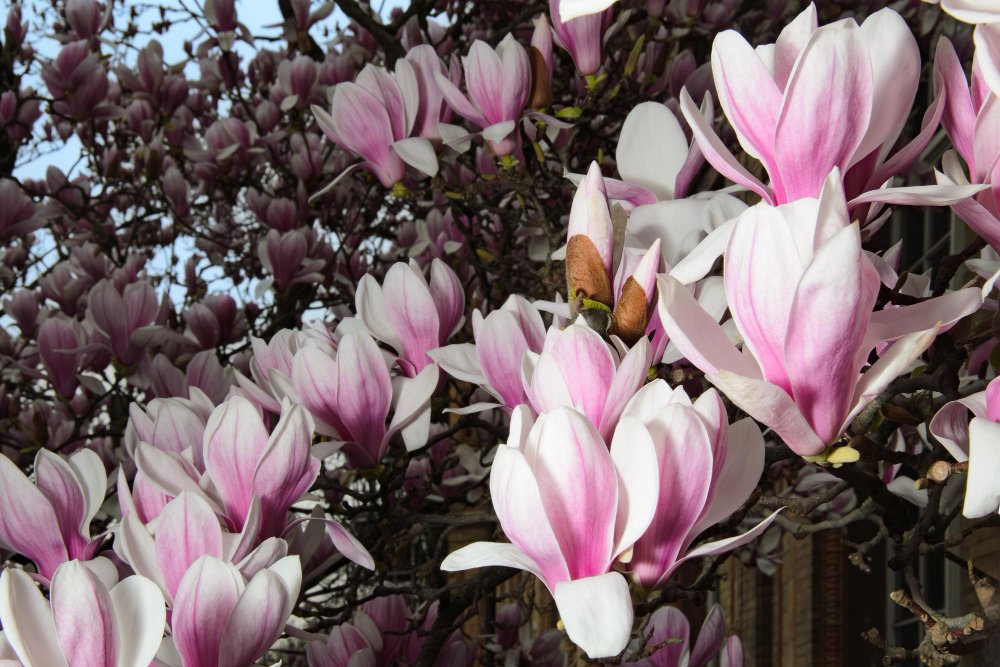Magnolia trees, with their large, fragrant blooms and timeless beauty, have captivated human imagination for centuries. Beyond their aesthetic appeal, magnolias hold profound cultural, symbolic, and mythological significance across global traditions. From ancient medicinal uses to modern-day symbolism in literature and art, these “living fossils” (dating back 100 million years) continue to shape human expression and connection to nature.
Ancient Origins and Symbolism
Magnolias are among Earth’s oldest flowering plants, with fossil records predating bees—evolving to be pollinated by beetles. Their prehistoric roots imbue them with unique cultural meanings:
- Timeless Resilience: Surviving ice ages and continental shifts, magnolias symbolize nature’s endurance. In feng shui, they represent “yin” energy—promoting harmony and perseverance through life’s challenges.
- Purity and Nobility: The pristine white blooms of species like Magnolia denudata inspired Victorian bridal bouquets. Korean traditions associate them with “moonshine purity,” while Cherokee legends view them as sacred lunar trees.
Did You Know? The magnolia’s name honors French botanist Pierre Magnol, who pioneered plant family classification—a fitting tribute to this taxonomically unique genus.
Magnolias in Eastern Traditions
In Asia, magnolias are deeply woven into cultural identity—appearing in everything from imperial crests to modern cinema:
- Chinese Culture: Known as “yulan” (玉兰), magnolias symbolize feminine beauty and gentleness in Confucian philosophy. During the Tang Dynasty, only emperors could plant them near palaces—a tradition preserved in Beijing’s Temple of Heaven today.
- Japanese Culture: Called “mokuren” (木蓮), their spring blooms mark hanami (flower-viewing) seasons. Samurai prized magnolia wood for sword hilts, believing its strength transferred to warriors. Modern studies confirm its antimicrobial properties—validating ancient medicinal uses for respiratory ailments.
Magnolias in Western Traditions
Western interpretations blend mythic grandeur with regional identity:
- Greek Connections: While absent in classical myths, modern Hellenic pagans associate magnolias with Persephone’s return—their early spring blooms mirroring her ascent from Hades. The flowers’ thermogenic properties (generating heat to attract pollinators) fuel associations with life force.
- American South: The Southern Magnolia (Magnolia grandiflora) became Mississippi’s state flower in 1952. Its waxy leaves inspired the “Steel Magnolia” metaphor—representing Southern women’s blend of grace and resilience during Civil Rights struggles. Faulkner’s novels frequently use them as symbols of decaying aristocracy.
Magnolia in Literature and Art
Creative works harness magnolias’ sensory and symbolic power:
- Literary Motifs: In “The Magnolia Story” (HGTV’s Chip and Joanna Gaines), the tree represents entrepreneurial growth. Contrast this with Tennessee Williams’ “Cat on a Hot Tin Roof,” where magnolias underscore repressed desires and Southern Gothic tension.
- Artistic Depictions: Georgia O’Keeffe’s magnolia series (1930s) abstracted their forms to explore feminine energy. Contemporary Aboriginal artist Judy Watson uses magnolia seed pods in installations to discuss colonization’s impact on native flora.
Medicinal and Practical Uses
Modern science validates traditional applications while uncovering new benefits:
- Evidence-Based Remedies: Magnolia bark contains honokiol—a compound studied for anxiety relief (comparable to diazepam in rodent studies, per 2017 Frontiers in Neuroscience). Korean research shows magnolia flower tea may reduce inflammation markers by 40%.
- Culinary Innovation: Michelin-starred chefs now use pickled magnolia petals as edible garnishes. The flowers’ citrusy-ginger notes feature in Australian bushfood fusion cuisine, like wattleseed-magnolia ice cream.
| Culture | Symbolism | Modern Relevance |
|---|---|---|
| Chinese | Feminine purity | National floral emblem (Shanghai) |
| Japanese | Spring renewal | Therapy gardens for dementia patients |
| Southern U.S. | Hospitality | Civil Rights movement icon |
Conclusion: The Living Legacy
Magnolias transcend ornamental value—they’re living repositories of human history. From Tang Dynasty emperors to contemporary cancer researchers studying honokiol, these botanical marvels continue to reveal new layers of significance. As climate change threatens some wild species (like the endangered Magnolia stellata), their cultural importance underscores conservation urgency.
Engagement Prompt: Have you encountered magnolias in cultural traditions? Share your experiences in the comments—we’d love to hear how these remarkable trees resonate across different backgrounds.




